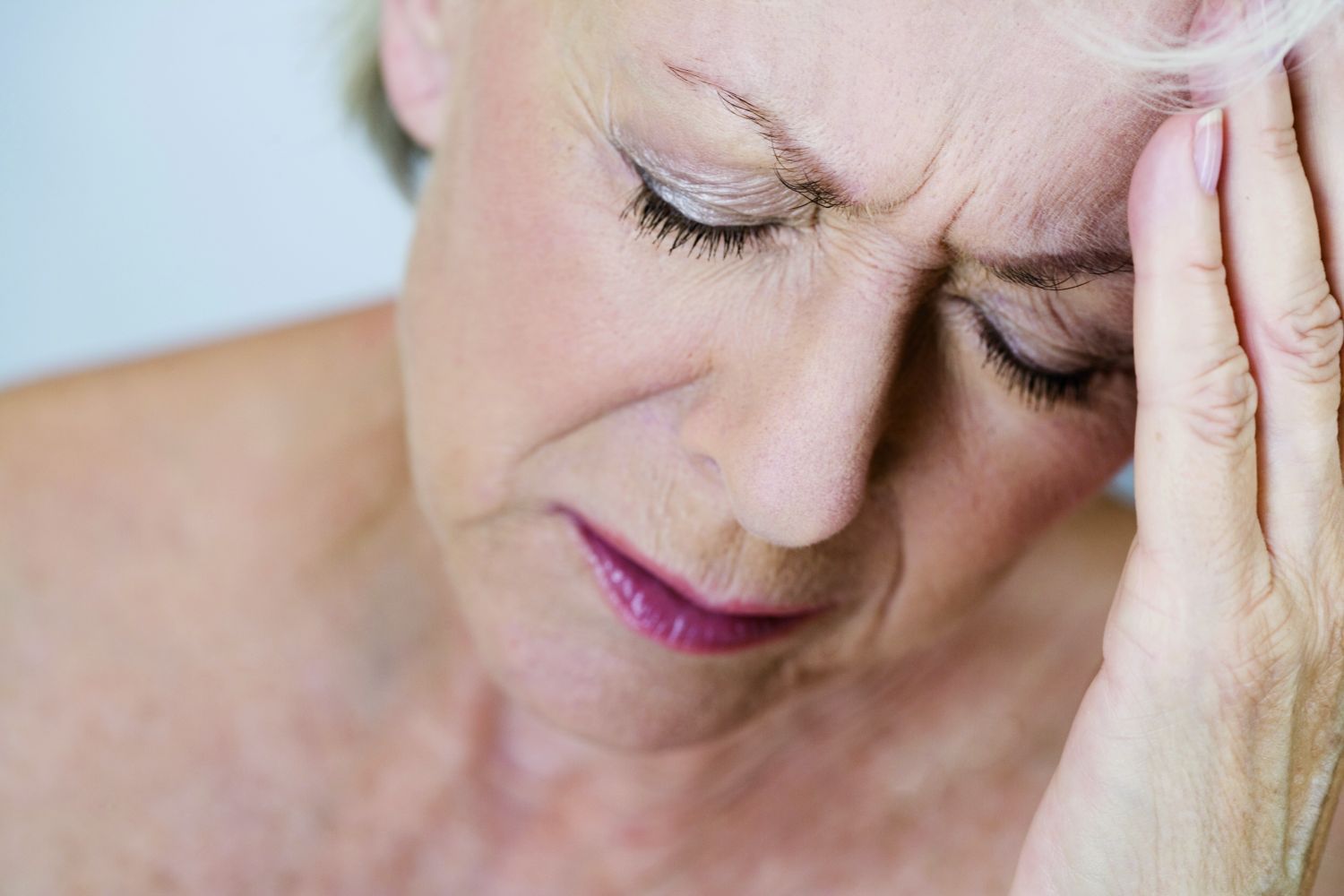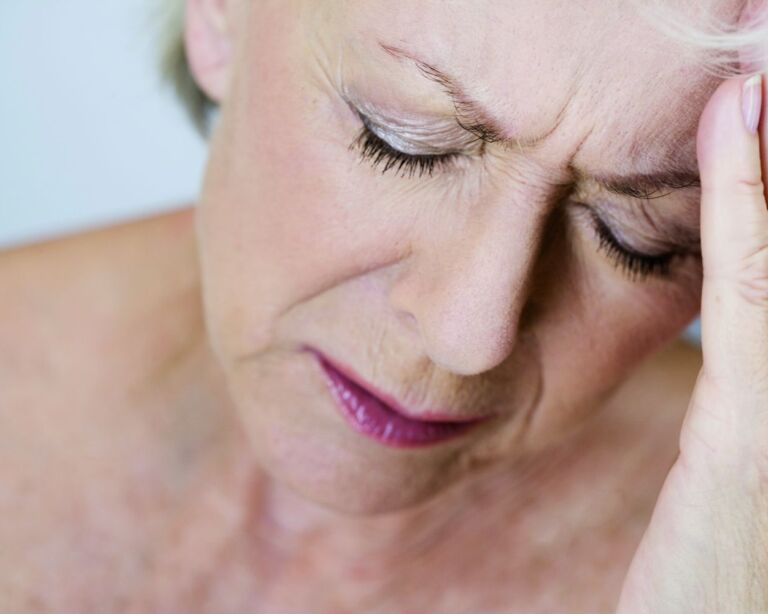Overview: What are headaches?
Everyone has probably had to deal with a headache at some point: it pinches, pulls, hurts, stings or pulsates in the head. The pain can be felt on one side, both sides or throughout the entire head. The medical term for headaches is cephalgia.
But not all headaches are the same. More than 200 different types of headache are known. They can be an independent disease (primary headaches) for which no organic cause can be found. However, headaches can occur as part of another illness (secondary headaches), for example in the case of infectious diseases such as flu or the common cold, high blood pressure or a stroke. Medication can also trigger headaches (medication-induced headache).
The most important primary types of headache are tension-type headaches, migraines and the very severe cluster headache. The various forms of headache differ in terms of where they are felt, the intensity, the nature of the pain and the possible accompanying symptoms. Migraines, for example, are often accompanied by nausea and vomiting, while cluster headaches also cause the eyes to become red and watery.
Headaches – frequency and age
Headaches are one of the most common complaints of all. In principle, they can affect people of any age – even children. Men and women are equally affected. However, the different types of headache are not equally distributed between the sexes. Some figures:
- Tension-type headaches: They occur so often that almost everyone is likely to experience them at some point in their lives. It is estimated that more than 300 out of every 1,000 people have recurrent tension-type headaches. They occur at any age. Women suffer from it slightly more often than men.
- Migraines: Women suffer from migraines more often than men. Approximately 14 out of 100 women and only seven out of 100 men are affected. The hormones are probably at work here. In children, migraine is roughly equally distributed between girls and boys. Around four to five out of 100 children suffer from it.
- Cluster headache: This type of headache is comparatively rare. Only one person in 1,000 suffers from cluster headaches. And this is where men are ahead: cluster headaches affect them twice as often. It usually appears for the first time between the ages of 20 and 40, but can start at any age.
Headaches: causes and risk factors
Doctors are familiar with many different types of headaches. The causes of primary and secondary headaches are different. Primary headaches are an independent disorder that occurs without a recognizable cause. Secondary headaches, on the other hand, are caused by another illness or injury.
Primary headaches: causes
The causes of primary headaches are not yet clearly understood. In many cases, it remains unknown why some people develop migraine, tension-type or cluster headaches and others do not. However, various risk factors and triggers for headache attacks are known. These include, for example:
- Fluid deficiency
- Excessive sun exposure on the head (sunstroke, heat stroke)
- Stress
- Skipping meals
- Noise
- Weather change
- Altered day-night rhythm, lack of sleep
- Mental problems in everyday life and at work
- Hormonal fluctuations during the menstrual cycle
- mechanical factors (pressure from a helmet, tension from a tight hairstyle)
Secondary headaches: causes
There are many diseases, but also some medications, which can cause headaches as a side effect or consequence. Examples are:
- Infectious diseases: for example colds, flu, sinusitis
- High blood pressure (hypertension)
- Visual impairment that has not been adequately corrected by a visual aid (e.g. short-sightedness and long-sightedness)
- Eye diseases, for example glaucoma, which is associated with increased intraocular pressure
- Brain inflammation, meningitis (encephalitis, meningitis)
- Stroke (circulatory disorders or cerebral hemorrhage)
- Brain tumors
- Anaemia (anemia)
- Metabolic disorders, such as low blood sugar (hypoglycemia)
- Injuries to the cervical spine, orthopaedic diseases
- Head injuries, for example concussion, traumatic brain injury after an accident
- Medication, for example pain or migraine medication, hormone preparations, heart, blood pressure or potency medication. Any physical illness can also be associated with psychological stress. This can manifest itself in worry, tension, circling thoughts or sleep disorders, among other things, and make the course of treatment more difficult. If you or your relatives desire psychiatric-psychological counseling and support, our specialists at the USZ will be happy to assist you.
Symptoms: headaches and other unpleasant "companions"
People often perceive headaches very differently. They differ, for example, in the character of the pain, its localization, intensity, duration and additional accompanying symptoms. Doctors classify headaches according to these characteristics:
- Course: acute headache attack or headache that recurs very frequently; occasional, intermittent or persistent headaches
- Location: forehead, temple, behind the eyes or ears, neck, back of the head; unilateral, bilateral or entire head, wandering pain or remaining in one place
- Pain quality: e.g. dull, pressing, stabbing, drilling, pulsating, knocking, “vice-like”
- Intensity: light, moderate or unbearable
- Situations: for example, improvement in the fresh air, worsening during physical activity, when bending over or lying down
- Accompanying symptoms: Nausea, vomiting, visual disturbances, sensitivity to light and sound, red or watery eyes, runny nose, neurological disturbances, for example of speech or consciousness
Tension-type headaches: symptoms
- dull, pressing headache
- Mild to moderate headaches
- The forehead often hurts, but sometimes the whole head hurts too
- can last only a few minutes, but also a week
- do not increase during physical activity, such as climbing stairs or doing sports
- No accompanying symptoms such as nausea, vomiting or increased sensitivity to light
Migraine: Symptoms
- pulsating, throbbing or hammering pain
- Moderate to severe headaches
- mostly one-sided
- often intensify with minimal movement or physical activity
- Some patients experience symptoms (“aura”) with flashes of light, blurred vision, speech disorders, paralysis or sensory disturbances immediately before a migraine attack. This is often accompanied by nausea, vomiting, increased sensitivity to light and noise or dizziness.
- Migraine attacks can last from a few hours to three days.
Cluster headache: symptoms
- Biting, stabbing or burning headaches
- Extreme pain that increases rapidly (usually within ten minutes)
- Strictly one-sided, usually in the area of one eye, sometimes also localized on the temple or forehead – often the same side of the head is always affected
- Pain is accompanied by an urge to move
- Accompanying symptoms: the eye is red and watery, blocked or runny nose, sweat on one side of the forehead and cheeks, constricted pupil, swollen or drooping eyelid, increased sensitivity to light and noise
- Pain attacks last between 15 minutes and three hours
Headaches: Diagnosis with us
Tension-type headaches are usually harmless and generally go away on their own. However, if you have frequent and repeated severe headaches, you should consult your family doctor. This is because it could also be due to a migraine, cluster headache or another cause. The diagnosis always begins with a discussion of your medical history, the anamnesis. We ask you some questions, for example:
- How long have you had headaches?
- How intensively are they pronounced? Light, moderate, strong?
- How long do headaches last on average?
- How often do you have headaches?
- How would you describe your headache, e.g. pressing, drilling, pulling, stabbing?
- Where would you localize the pain? Eyes, forehead, temple, neck, on one side, on both sides, everywhere?
- Are there situations in which the pain improves or worsens (for example, when moving or lying down)?
- Are there other symptoms in addition to the headache (e.g. nausea, vomiting, flashes of light, difficulty standing, dizziness)?
- Have you been able to identify triggers that set off the headache (e.g. food, alcohol, stress, weather changes, menstruation)?
- Do you have any known diseases? If yes: Which ones?
- Have you recently suffered an accident or injury?
- Do you have a family history of headaches?
- Are you taking any medications? If yes: Which, since when, how often, in what dose?
- Have you often taken painkillers for headaches?
- What do you eat and do you drink enough fluids?
- Do you drink alcohol regularly?
- Are you increasingly suffering from stress in your everyday life and at work?
- Are you frequently exposed to noise at home or at work?
Their answers usually give us the right clues as to what type of headache it is. Further examinations are usually not necessary.
Sometimes it is helpful to keep a headache diary (headache calendar). Such forms are available on the Internet, for example from the German Migraine and Headache Society. There are also various headache and migraine apps in which you can electronically document the most important points and data relating to your headaches.
If the diagnosis is still unclear, further examinations will follow. Examples are:
- Physical examination – we test the general state of health and look for abnormalities or changes.
- Neurological examination: We check reflexes, sensory perception, muscle strength and mobility, for example.
- X-ray examination, for example to detect signs of wear and tear in the cervical spine.
- Computed tomography (CT ) or magnetic resonance imaging (MRI = magnetic resonance imaging) – changes in the brain can be diagnosed in this way.
- Doppler sonography (an ultrasound examination) and angiography (an X-ray method) – visualization of the vessels in the brain
- Lumbar puncture: examination of the cerebrospinal fluid (CSF)
Hormone-dependent migraine
Migraine is a disabling condition that affects around 20% of the female population. It occurs significantly more frequently in women than in men and is associated with the menstrual cycle in 50% of cases. This suggests that female hormones play an important causal role. Cyclical migraines in particular respond poorly to conventional treatments with painkillers.
Headaches: prevention, early detection, prognosis
The exact causes of primary headaches often remain undiscovered. However, there are some known risk factors and triggers for headaches that you can address yourself. If you switch these off, it is sometimes possible to prevent headaches or reduce the number of headache attacks. It is advisable to keep an (electronic) headache or migraine diary. For example, note down the precursors, pain intensity, duration, triggers, accompanying symptoms or painkillers taken. This will help you get to the bottom of your headaches.
Preventing headaches: general tips
There are some general measures that you can often take to prevent headaches. Some tips:
- Eat a healthy diet (e.g. lots of fruit, vegetables, wholemeal products), drink enough (e.g. water, tea, fruit juice spritzers) and eat regular meals.
- Exercise regularly in everyday life and do sport, preferably in the fresh air. Endurance sports such as hiking, Nordic walking, running, swimming or cycling are good.
- Learn a relaxation technique, such as autogenic training or progressive muscle relaxation according to Jacobson. Yoga, Tai Chi or Qigong can also alleviate stress.
- Do not take painkillers for long periods without consulting your doctor – painkillers can also cause headaches.
- Psychotherapy, for example cognitive behavioral therapy (CBT)
- Medication for prevention: For people with frequent tension-type headaches, migraine attacks and cluster headache attacks, medication is available as prophylaxis. It reduces the intensity, duration and frequency of headache attacks.
Course and prognosis of headaches
The course and prognosis of headaches depend on the type of headache. Tension-type headaches are usually only temporary and subside after a short time. However, they can also become chronic and then recur very frequently.
The course of the migraine can vary. In some women, it improves in certain situations and phases of life, for example during pregnancy. It often disappears completely after the menopause. However, migraines very rarely become chronic. This means that sufferers have migraines on more than 15 days per month for at least three months.
Cluster headaches usually only occur in certain phases. The headache episodes can last from days to weeks. In between there are always periods without symptoms, which can last for varying lengths of time – sometimes even years. Cluster headaches tend to occur in spring or fall.
Sometimes cluster headaches also take a chronic course. The attacks then occur more frequently and there are hardly any phases without symptoms. People who first develop cluster headaches at an advanced age are particularly at risk. The reverse can also happen: A chronic form can turn into episodes.
In the case of secondary headaches caused by another disease, the prognosis and course depend on the underlying disease. However, headaches often improve if we treat the cause sufficiently, such as infections, high blood pressure or glaucoma.
Headaches: treatment with different strategies
Treatment is not always necessary for headaches. Acute tension-type headaches often disappear on their own within a few hours or days once the trigger has been removed.
However, treatment is advisable for chronic tension-type headaches, migraines and cluster headaches. The therapies, which we often use in combination, are suitable either for the prevention of headache attacks or for treatment.
The treatment of secondary headaches always depends on the cause or the underlying disease. For example, we have to treat high blood pressure, strokes or injuries in order to eliminate the headaches.
We are in close contact with our partner disciplines such as psychiatry, rheumatology, anesthesiology, neuroradiology, neurosurgery, oral and maxillofacial surgery and physiotherapy for your pain. Pain can be complex. We develop interdisciplinary treatment proposals in our Interdisciplinary Pain Consultation Service (ISSS) and our Center for Head, Facial and Jaw Joint Pain (ZKGK).
Details of the treatments


